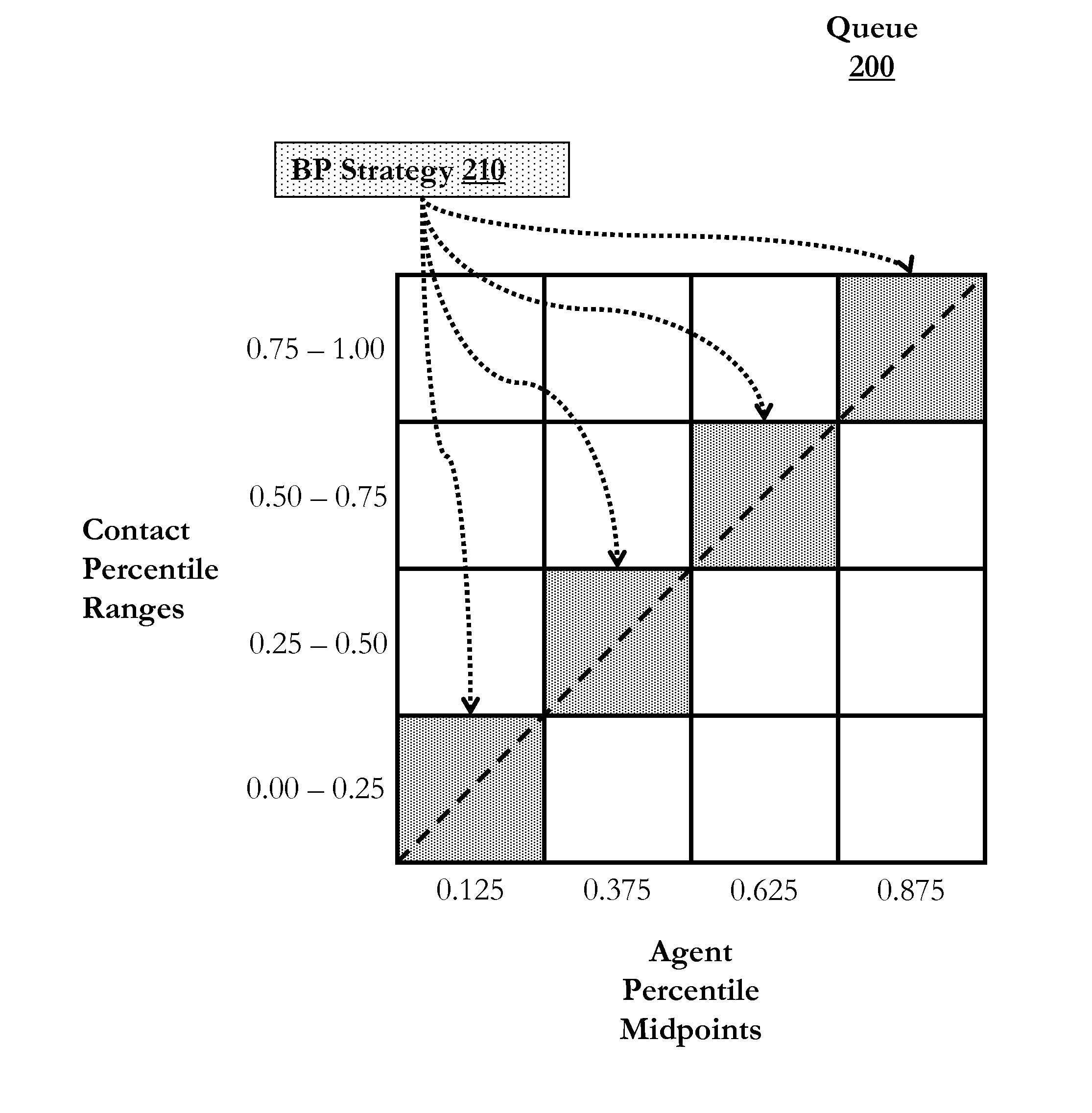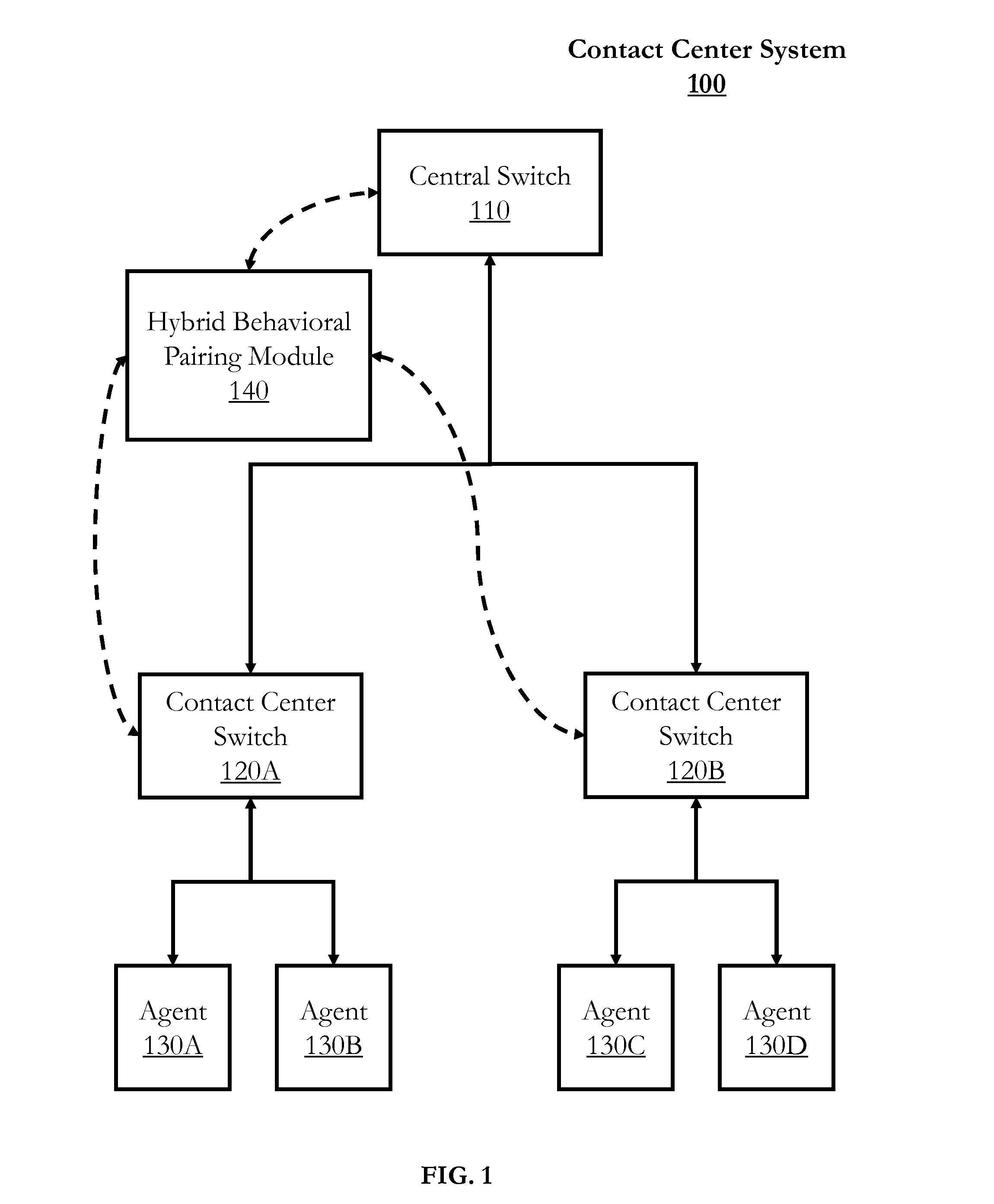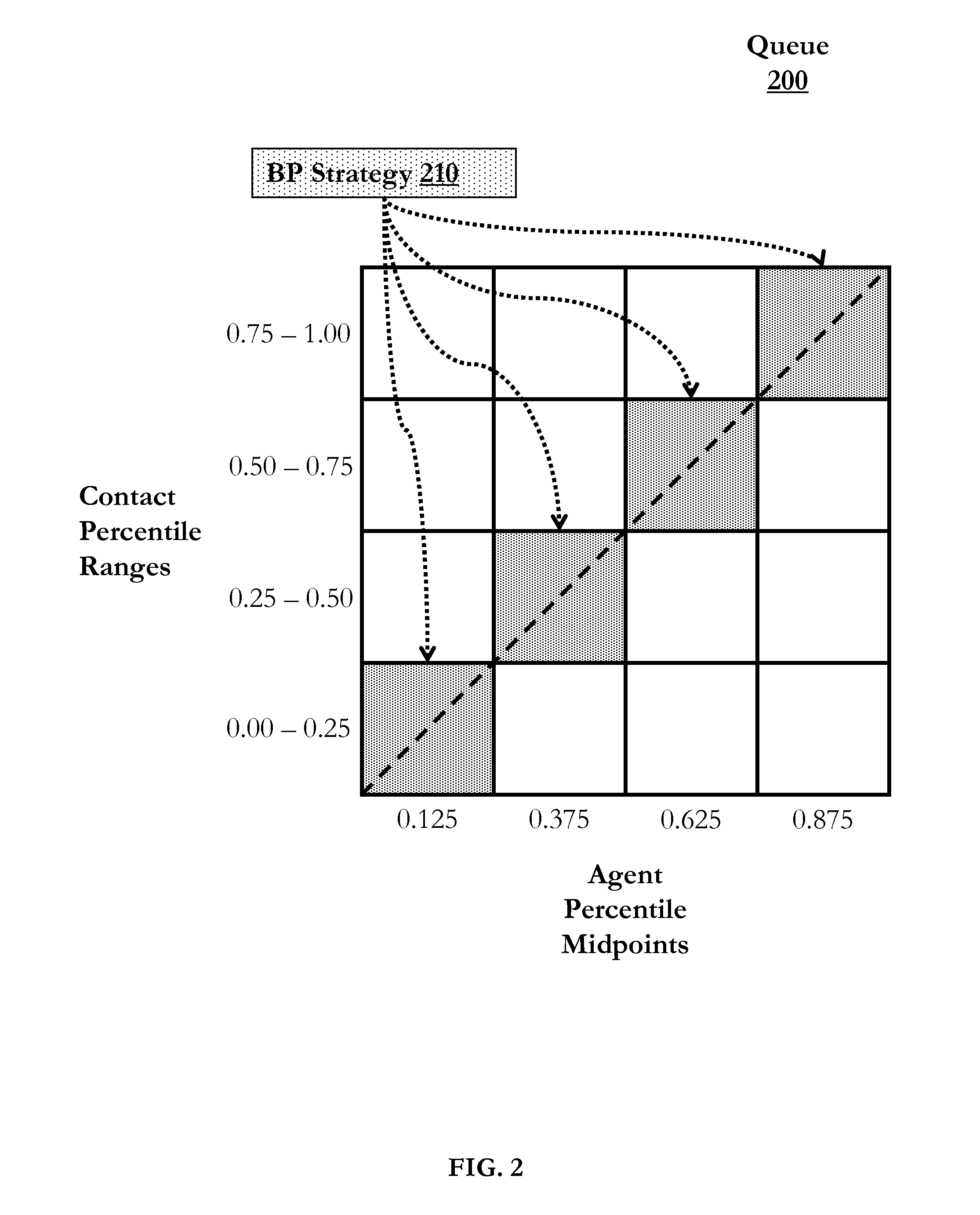Techniques for hybrid behavioral pairing in a contact center system
a contact center and hybrid technology, applied in the field of contact centers, can solve the problems that low-priority contacts may experience noticeably longer waiting times, and achieve the effect of reducing the average waiting tim
- Summary
- Abstract
- Description
- Claims
- Application Information
AI Technical Summary
Benefits of technology
Problems solved by technology
Method used
Image
Examples
Embodiment Construction
[0038]A typical contact center algorithmically assigns contacts arriving at the contact center to agents available to handle those contacts. At times, the contact center may be in an “L1 state” and have agents available and waiting for assignment to inbound or outbound contacts (e.g., telephone calls, Internet chat sessions, email). At other times, the contact center may be in an “L2 state” and have contacts waiting in one or more queues for an agent to become available for assignment. Such L2 queues could be inbound, outbound, or virtual queues. Contact center systems implement various strategies for assigning contacts to agents in both L1 and L2 states.
[0039]The present disclosure generally relates to contact center systems, traditionally referred to as “Automated Call Distribution” (“ACD”) systems. Typically, such an ACD process is subsequent to an initial “Skills-based Routing” (“SBR”) process that serves to allocate contacts and agents among skill queues within the contact cent...
PUM
 Login to View More
Login to View More Abstract
Description
Claims
Application Information
 Login to View More
Login to View More - R&D
- Intellectual Property
- Life Sciences
- Materials
- Tech Scout
- Unparalleled Data Quality
- Higher Quality Content
- 60% Fewer Hallucinations
Browse by: Latest US Patents, China's latest patents, Technical Efficacy Thesaurus, Application Domain, Technology Topic, Popular Technical Reports.
© 2025 PatSnap. All rights reserved.Legal|Privacy policy|Modern Slavery Act Transparency Statement|Sitemap|About US| Contact US: help@patsnap.com



